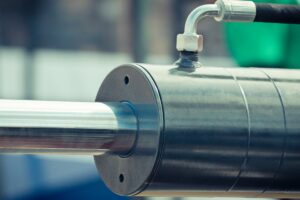Welcome to our comprehensive guide on building and programming a robot with Arduino. In this article, we will delve into the fascinating world of robotics, exploring how you can create your very own robot using Arduino technology. Whether you are a beginner or an experienced enthusiast, this article will provide you with valuable insights and step-by-step instructions to help you embark on your robotic journey.
Getting started with arduino
If you’re new to Arduino, it’s essential to understand the basics before diving into robot construction. Arduino is an open-source platform that enables you to create interactive and programmable electronics. It consists of a microcontroller and a user-friendly integrated development environment (IDE) that allows you to write and upload code to the microcontroller.
Here are the fundamental steps to get started with Arduino:
- Obtain an Arduino board (such as Arduino Uno or Arduino Nano).
- Download and install the Arduino IDE on your computer.
- Connect your Arduino board to your computer using a USB cable.
- Write and upload your first „Hello, World!” program to make an LED blink.
Building your arduino robot
Now that you’re familiar with Arduino, let’s move on to building your robot. The process can be broken down into the following steps:
1. selecting components
First, you’ll need to gather the necessary components for your robot project. These may include:
- Arduino board (e.g., Arduino Uno)
- Robot chassis or platform
- Wheels and motors
- Sensors (ultrasonic, infrared, etc.)
- Breadboard and jumper wires
- Power source (battery or rechargeable)
2. assembling the hardware
Once you have all the components, assemble the hardware according to your robot’s design. Attach the motors, wheels, sensors, and other peripherals to the chassis. Ensure that everything is securely connected and aligned properly.
3. wiring and connections
Connect the sensors, motors, and other electronic components to your Arduino board using jumper wires. Refer to the datasheets and pinout diagrams to make the correct connections. It’s crucial to avoid any loose or incorrect wiring.
4. writing the robot’s code
Now comes the exciting part—programming your robot! Write the code that will control the robot’s movements, sensor interactions, and any other desired behaviors. You can use the Arduino IDE and the Arduino programming language, which is similar to C/C++.
5. uploading the code
Once your code is ready, upload it to the Arduino board. Make sure your robot is connected to your computer via USB. Verify and upload the code using the Arduino IDE. This step is crucial for testing and refining your robot’s performance.
Exploring possibilities with your arduino robot
Your Arduino robot is now ready to embark on various adventures. Depending on your creativity and skills, you can explore the following possibilities:
- Obstacle avoidance: Use sensors to help your robot navigate around obstacles.
- Line following: Create a line-following robot that can trace a predefined path.
- Remote control: Implement remote control capabilities via Bluetooth or Wi-Fi.
- Autonomous operation: Develop algorithms that enable your robot to make decisions on its own.
- Integration with other devices: Connect your robot to other smart devices in your home.
Roboty arduino – twórz i programuj
Teraz, gdy masz podstawową wiedzę na temat Arduino, możesz zacząć swoją przygodę z budowaniem i programowaniem robotów. Roboty Arduino stanowią fascynujący obszar inżynierii, który oferuje nieograniczone możliwości kreatywności i nauki. Niezależnie od twojego poziomu doświadczenia, ten artykuł dostarczy ci cennych informacji i krok-po-kroku instrukcji, które pomogą ci rozpocząć swoją przygodę z robotyką.
Często zadawane pytania (faqs)
Jakie są podstawowe komponenty potrzebne do budowy robota arduino?
Do budowy robota Arduino potrzebujesz następujących podstawowych komponentów:
- Płytka Arduino (np. Arduino Uno)
- Podwozie lub platforma robota
- Koła i silniki
- Czujniki (ultradźwiękowe, podczerwieni itp.)
- Płytka prototypowa (breadboard) i przewody łączeniowe
- Zasilanie (bateria lub akumulator)
Jakie możliwości oferuje robot arduino?
Robot Arduino oferuje wiele możliwości, w tym:
- Unikanie przeszkód: Użyj czujników do nawigacji wokół przeszkód.
- Śledzenie linii: Stwórz robota, który może śledzić określoną trasę.
- Sterowanie zdalne: Wprowadź zdalne sterowanie za pomocą Bluetooth lub Wi-Fi.
- Działanie autonomiczne: Opracuj algorytmy umożliwiające robotowi podejmowanie decyzji samodzielnie.
- Integracja z innymi urządzeniami: Podłącz swojego robota do innych inteligentnych urządzeń w domu.
Dzięki tym wskazówkom będziesz gotów rozpocząć projektowanie i programowanie swojego robota Arduino. Daj się ponieść kreatywności i odkrywaj fascynujący świat robotyki!
Zobacz także:






